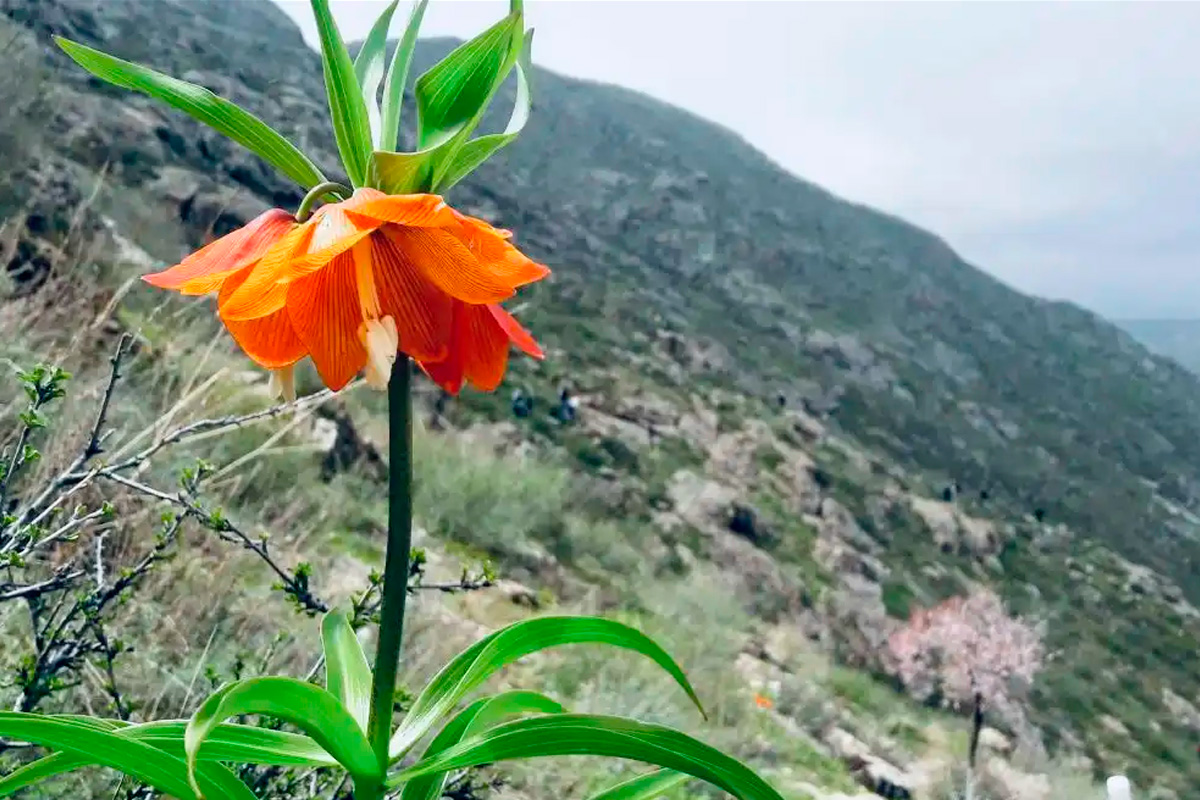Aigul flowers – sights of Batken. Kyrgyzstan is a country with a wide variety of plant species, which is due to the presence of many mountain ranges and heterogeneous relief, leading to the presence of various climatic zones on the territory. However, among this huge variety of plants and flowers, the beauty of the mountains stands out, which has received the sonorous and beautiful name of the Aigul flower.
This is due to the fact that the Aigul flower (“ai” means “moon” in Kyrgyz, “gul” means “flower” or “moon flower”) is a so-called endemic, that is, it grows only in certain places of the planet, and its inclusion in the Red Book in 1978 is not accidental: it is It was the first flower listed in the Red Book of the Kyrgyz Republic. Scientifically, the flower is called Fritillaria eduardii Regel (Latin – Edward’s grouse).
In fairness, it should be noted that in some regions of Afghanistan and Tajikistan there are also flowers similar to Aigul, but, according to experts, the buds differ in color and size.
Interestingly, the Aigul flower blooms only on the slopes of Mount Aigul-Tash (“tash” – “stone”). This rocky mountain is located 15-18 km from the city of Batken, the center of the Batken region. In Batken, the beauty of Aigul is enchanted every April. This is due to the fact that April, when flower buds open and bloom, gives others indescribable beauty and stormy joy. It is believed that everyone who sees the opened flower of Aigul will be infinitely happy. This is due to the fact that the flowering period of Aigul is only two weeks.
Therefore, during the flowering period of Aigul, many tourists and villagers gather in the vicinity of the mountain. Aigul flower has long become a kind of brand or a business card of the Batken district.
The height of the flowers is usually 80-90 cm, but some of them are taller. Locals say that they have met Aigul flowers with a length of more than 1.5 m and a height of a person. Aigul leaves grow along the entire length of the slender stem, and their shape gives the flower beauty, grace and elegance. The buds themselves have a bell-shaped shape, they have about a dozen orange petals of different shades. One of the local old-timers said that the Aigul flower is “a real botanical aristocrat worthy of a king.”
According to experts, the Aigul flower blooms for the first time in seven years, and every year their number increases and becomes more and more. Thus, the number of flowers can determine the age of the plant. Another unique feature of this flower is that it does not grow in sunny areas of the mountains. Another interesting fact was told to me by local residents. They said that aigle blooms only on a full moon.
Because of the beauty and rarity of the Aigul flower, many tourists collected the entire root for planting in their gardens. However, it turned out that this endemic flower did not take root even in neighboring areas. Today, local schoolchildren constantly control the territory behind Mount Aigultash, especially during the flowering of the mountain beauty. Grazing is also prohibited here, and representatives of the “Green Patrol” monitor this.
The beauty and grace of the Aigul flower is not its only advantage. By the way, this beautiful batken is also used in folk medicine.
Legends about the Aigul flower
In ancient times, a rich man lived here with a beautiful daughter named Aigul. Her lover, Kozu Ulan, was popularly known as the first brave. The young couple liked each other, and their sincere relationship won the respect of the villagers. Father Aigul, who wished his daughter happiness, agreed to their marriage and blessed the young.
And now, when the young people were about to get married, disaster struck people. A large army of the enemy attacked the peaceful people, and Kozu Ulan, along with other horsemen, opposed the conquerors. In the end, the enemy was completely defeated, but Kozu-Ulan, who was standing in the first line of defense, died.
Kozu-Ulan’s disciples gave his heart to Aigul, according to Aigul’s wish. Aigul took the heart of her lover, climbed a high rocky mountain and threw herself from it. A few days later, an amazingly beautiful flower bloomed at the site of the fall of Aigul, and people called it Aigul. And the rock on which the fearless girl rushed was called Aigul-Tash. Next to Mount Aigul there is a hill of almost the same height, which is called Kozu Ulan. There is always dew on the flowers of Aigul, which the locals call “tears of Aigul”.
These beautiful and sad legends have been passed down by the people for years and even centuries.





